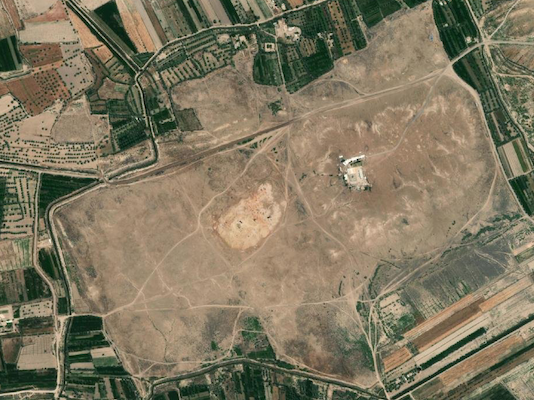Walls and Gates of Borsippa
The city wall of Borsippa, Ṭābi-supūršu, is mentioned in several first-millennium-BC royal inscriptions, as well as in the Kuyunjik Ziggurat List.

Names and Spellings
Borsippa's city wall bears the Akkadian ceremonial name Ṭābi-supūršu, which means "Its Fold Is Pleasant."
- Written Forms: BÀD.DÙGab-su-pur-šu; DÙG.GA-su-pur-šú; ṭa-a-bi-su-pu-úr-šu; ṭa-a-bi-su-pur-šu.
Known Builders
- Neo-Assyrian (ca. 911–612 BC)
- Ashurbanipal (r. 668–631 BC)
- Neo-Babylonian (ca. 625–539 BC)
- Nabopolassar (r. 625–605 BC)
- Nebuchadnezzar II (r. 604–562 BC)
Building History
Ashurbanipal (r. 668–ca. 631 BC) records that he had Ṭābi-supūršu rebuilt since its mudbrick superstructure was reported to have become old and then collapsed. This Assyrian ruler states that the work was carried out quickly in order to increase the security of Borsippa's principal temple Ezida. Ashurbanipal also states that he renovated the city gates and hung new wooden doors in their entrances; the names of the gates themselves are not mentioned. The work was undertaken sometime between 668 BC and 652 BC.
According to Nebuchadnezzar II (r. 604–562 BC), his father Nabopolassar (r. 625–605 BC) had the (stone) foundations of Ṭābi-supūršu (re)laid, as well as had an embankment wall of baked brick and bitumen constructed outside its circumference. Since Nabopolassar died before the restoration of Ṭābi-supūršu was completed, it was up to his son and immediate successor to finish the job. Nebuchadnezzar records that his workmen raised the mud-brick superstructure, widened the embankment wall, and dug a moat around Borsippa, which he then had filled with water.
Banner image: satellite image of Borsippa with the visible ruins of Ezida and Eurmeiminanki.
Jamie Novotny & Joshua Meynell
Jamie Novotny & Joshua Meynell, 'Walls and Gates of Borsippa', Babylonian Temples and Monumental Architecture online (BTMAo), The BTMAo Project, a sub-project of MOCCI, [http://oracc.org/btmao/Borsippa/WallsandGates/]